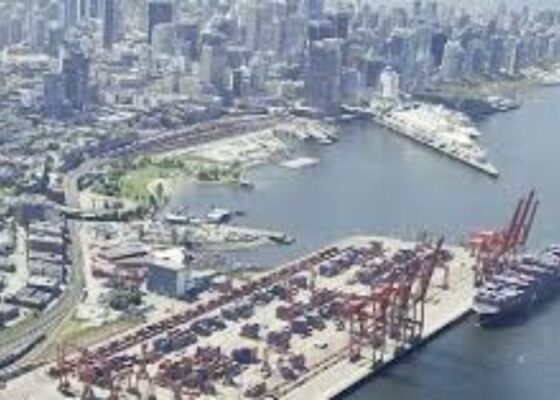As a New Yorker and public transportation enthusiast with over 7 years of experience riding the subway, I was thrilled to hear about the MTA’s historic $65.4 billion capital plan to overhaul and modernize New York City’s aging transit system. This is the largest investment in NY transit infrastructure in decades and aims to improve reliability, accessibility, and capacity across subways, buses, commuter rails and bridges. Read below about “New York City’s $65.4B Transit Overhaul-What It Means for Riders?”.
While construction can be disruptive, this overhaul is long overdue and will benefit all New Yorkers and visitors who rely on public transportation.
Table of Contents
New York City’s $65.4B Transit Overhaul-What It Means for Riders?
Here’s an overview of the major changes coming to the NYC transit system and how riders can expect to be impacted in the years ahead:
Subway Upgrades
The subway is the backbone of New York’s public transit network, serving over 5 million daily riders. The MTA plans to spend $37 billion on subway infrastructure upgrades, with the goals of improving reliability, reducing delays, and providing a more comfortable rider experience.
Key subway projects include:
- Signal modernization on 7 major subway lines. New signal systems will allow for computerized train control and real-time adjustments, reducing wait times and congestion.
- Over 1,900 new subway cars to replace the oldest models. The new cars will be more reliable, spacious and comfortable.
- Platform door installation at stations on lettered lines. Doors separating platforms from tracks will improve safety and allow for air conditioned stations.
- 130 new accessible stations for riders with disabilities. This will expand subway access and comply with ADA regulations.
- Expanded cell and WiFi connectivity in all underground stations for uninterrupted service.
For riders, these upgrades will mean fewer delays, less crowding, more reliable service and a more modern subway environment. While construction will require some night/weekend closures, the long-term gains are well worth it.
Bus Network Enhancements
Buses serve over 2 million New Yorkers daily, but slow speeds and unreliable service have plagued networks for years. The MTA plans major improvements including:
- Dedicated bus lanes and traffic signal priority to speed up surface transit. This will help buses bypass congestion and stick to schedules.
- 1,080 new electric buses to replace diesel models. This will reduce emissions and noise.
- New customer information displays and digital ticketing to make bus rides smoother.
- Expanded off-peak and interborough service to underserved areas.
For bus riders, this means faster commutes, cleaner and quieter rides, and service to new neighborhoods. As a frequent bus rider myself, I’m thrilled to see these much-needed upgrades.
Accessibility Improvements
Only about 25% of New York’s 472 subway stations are currently accessible for riders with disabilities. Under this plan, elevators will be added to make 70 more stations compliant with the Americans with Disabilities Act. Accessibility will also be expanded on commuter rail networks like the LIRR and Metro North. For wheelchair users, families with strollers and anyone who struggles with stairs, these upgrades provide greater freedom and mobility.
Safer Bridges and Tunnels
NYC’s bridges and tunnels see high traffic volumes each day. The capital plan invests over $6 billion to strengthen and rehabilitate these critical crossings. Cable inspections, steel repairs, new lighting and traffic monitoring systems will improve safety for both vehicles and pedestrians. Many bridges will also get widened lanes and shoulders to reduce gridlock. As someone who frequently crosses the East River bridges, I’m glad to see them get some much-needed TLC.
21st Century Amenities
While core infrastructure remains the focus, the capital plan also includes money for amenities that will make commuting more pleasant:
- Additional public WiFi hotspots, cellular connectivity and USB charging ports throughout the transit network.
- Renovated, cleaner stations with improved lighting, digital signs and platform screens.
- New security cameras, emergency intercoms and Help Point kiosks to boost safety.
Small touches like these will help provide a more modern and passenger-friendly experience.
Potential Challenges
A massive overhaul of this scale is certain to cause growing pains. The MTA plans to mitigate disruptions, but riders should prepare for the following during construction:
- Station, lane and track closures, especially on nights/weekends. This may require planning alternate routes.
- Increased construction noise, dust and debris in stations and surrounding areas.
- Passenger crowding and delays as stations and lines are taken out of service for upgrades.
- Slow zones where track and signal work reduces train speeds.
While inconvenient, these issues are temporary. Focusing on the long-term benefits makes it easier to endure the construction period. I’m viewing it as short-term pain for long-term gain.
Conclusion
The Important Role of Public Transit Investing in transit infrastructure is crucial for NYC’s future. As the city continues growing, an efficient and extensive public transportation network takes cars off the road, reduces emissions, connects communities and provides access to jobs and services.
Upgrading aging subways, buses and rail networks to meet demand and modern standards is the only way to ensure reliable service in the decades to come. Though the price tag is high, the cost of doing nothing would be far greater. I hope you understand the “New York City’s $65.4B Transit Overhaul-What It Means for Riders?”.
As a lifelong rider, I’m excited to see my transit system get the overhaul it badly needs. While construction will bring challenges, the improvements will be transformative. With safer bridges, faster buses, accessible stations and next-gen subways, public transit in New York will be ready to meet the needs of a 21st century global city.

I am Monica, the enthusiastic explorer behind funthingsworld.com. With a degree in Leisure and Recreation Management and over 5 years of diving into thrilling adventures, I’ve made it my mission to uncover the best and most exciting activities around the globe.
Stay connected and get a sneak peek into my adventures on Instagram: @mongjerde












